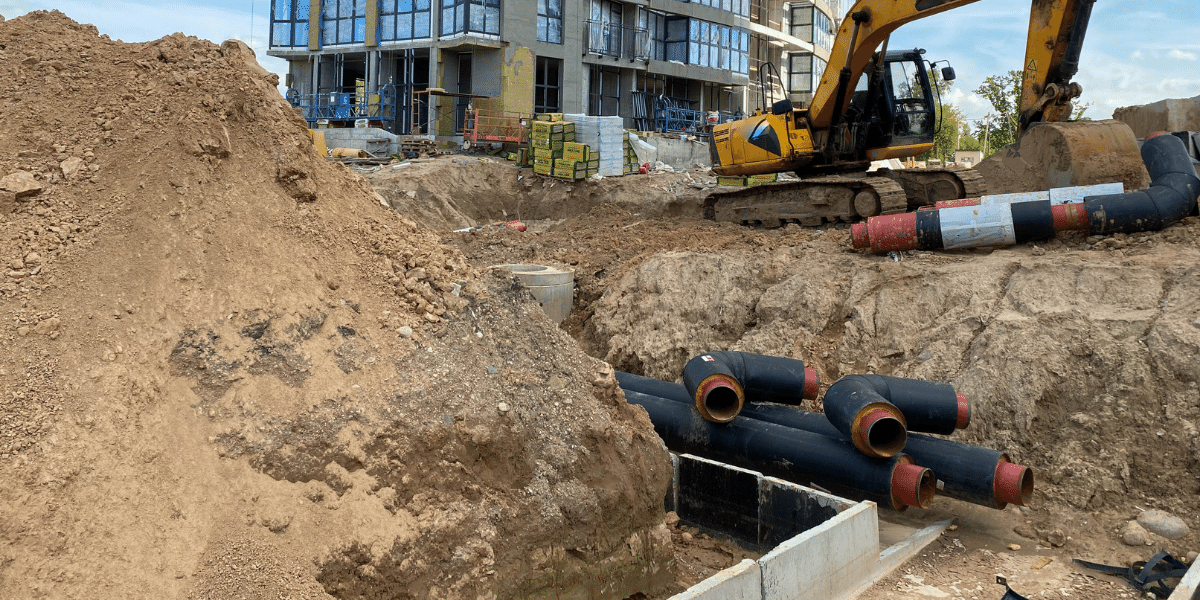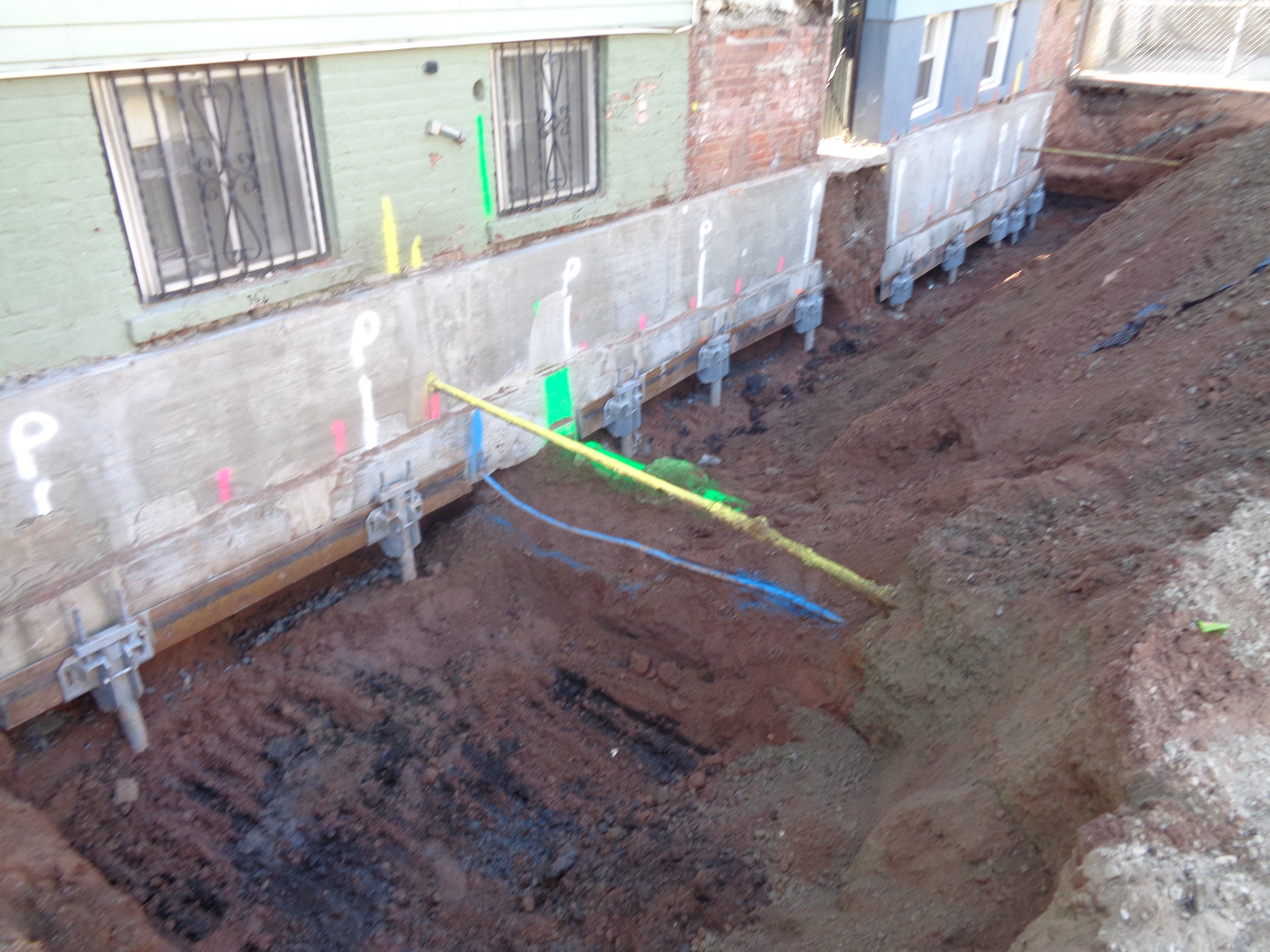Understanding Excavating Hazards Near Existing Structures
If you're a foundation contractor, you know that excavating near existing structures can be tricky. There are a lot of potential hazards to consider, and it's important to make sure you understand them before starting any work. In this blog post, we'll go over some of the most common hazards associated with excavating near existing structures. We'll also provide some tips on how to avoid them. So if you're ready to learn more about excavating safely, read on!
Soil and Structure Risks in Site Work
One of the biggest risks during excavation work is damage to the surrounding structure. The excavation process can cause a lot of stress on the surrounding soil, which can lead to movement and instability. This can put a lot of pressure on the foundation of the structure, leading to cracking or even collapse. In order to minimize this risk, it is important to work with an experienced excavation support contractor who can ensure that the excavation process is done carefully and with minimal impact on the surrounding area. By doing this, you can help to ensure that your excavation project is completed safely and without any damage to the surrounding property.
When foundation underpinning or shoring is improperly designed, executed or monitored, it can lead to foundation movement or local structural failures. These risks are generally avoidable, but they can be difficult to identify. They arise from hazards that are less familiar and less obvious in their cause and effect than failures from improper underpinning or shoring. A foundation underpinning contractor should be aware of these risks and take appropriate steps to avoid them.
Understanding Soil
Note: This is a stock image and not one of our projects.
Soil is an important factor in construction projects. It's one of the first things that civil engineers test before starting to build. Soil can affect the foundations of a structure, and it can also be used to help stabilize a structure. Soil has a lot of strength, but it can also be very weak. This is why soil testing is so important. It's necessary to understand the strength and weaknesses of soil before building on it.
Otherwise, there could be problems down the road. Weaker soil might not be able to support the weight of a structure, or it might settle unevenly and cause cracking or other damage. Stronger soil can help to support a structure and prevent settlement.
Soil amendments can also be used to help stabilize a slope or embankment. In this case, soil acts as a buffer between the structure and the force of the earth movement. By understanding soil, civil engineers can ensure that structures are built on solid ground and that adjacent properties are not affected.
Excavation Sloping
When the depth of an excavation exceeds a nominal depth, trouble can occur. To avoid this, excavation companies will sometimes cut the sides of the excavation at an angle. This angled wall prevents the sides from caving in and helps to support the excavation.
Site contractors should evaluate the site conditions to identify potential site constraints that may limit the depth or size of the excavation. The geotechnical design and site conditions may also dictate the type of excavation equipment that can be used, and the need for specialized excavation techniques. The site contractor should also investigate the potential for soil or groundwater contamination, and the need for site remediation. The site investigation should be undertaken prior to commencing any excavation work.
Sloping soils can impact the overall construction footprint and on most confined construction sites sloping may not be possible.
Site Benching
Benching is the process of excavating a series of horizontal ledges into the side of an excavation. These ledges, or benches, help to increase the stability of the excavation and prevent soil sloughing and collapse. Benching is typically used in foundation and excavation work, where it can be used to create a stable foundation for a building or to prepare an area for footings and piers.
However, benching can also be used in other types of excavations, such as digging a trench for utilities. While benching does require more space than sloping, it can be an effective way to stabilize an excavation and improve safety conditions.
Foundation Underpinning
If you're in the foundation underpinning business, you know that the presence of nearby existing in-service structures greatly increases the risk and technical difficulty of excavation. The most obvious example of this is excavating a basement on an urban lot with adjacent building foundations on the property lines bearing on soil above the bottom of the excavation. Underpinning of the adjacent structures is the norm in this scenario.
However, nearby existing structures can present other difficulties that are less obvious and are unfamiliar to many in the construction industry.
For example, you might encounter problems with vibration from adjacent traffic or other factors during construction activities. In some cases, it might be necessary to support an adjacent structure during excavation to avoid differential settlement issues. As a foundation underpinning company, you need to be aware of all these potential problems and have solutions ready. With experience, you'll learn to anticipate potential difficulties and be able to offer your clients comprehensive foundation underpinning services.
Construction Site Shoring
Excavation support contractors specialize in the construction of earth retention and foundation support systems using techniques like soil nails, rock bolts, micropiles, jet grouting and anchored earth walls. Excavation shoring is a process where the contractor reinforces the soil around an excavation site to prevent collapse.
The most common methods for shoring are soldier piling, secant piling and sheeting. Excavation support systems are designed to offer temporary or permanent support during construction and can be used in a variety of applications such as underpinning, slope stabilization, cofferdams, bridge abutments, retaining walls and basement foundations. Excavation shoring is a critical part of any construction project and should be carried out by a competent earth shoring contractor with experience in the design and installation of these systems.
Common Foundation Shoring Systems
Soldier piles
Sheet piling
Secant piling
Earth nails
Helical pile earth retention
Conclusion
If you are planning an excavation project near an existing structure, it is important to take into account the potential risks to the soil and foundation. There are a variety of measures you can take to mitigate these risks, such as slope excavations correctly, underpinning the foundation, and using construction site shoring. For more information on how to safely excavate near existing structures, contact Shore Systems Group today.
We have years of experience helping contractors navigate these tricky projects and would be happy to help you too.




